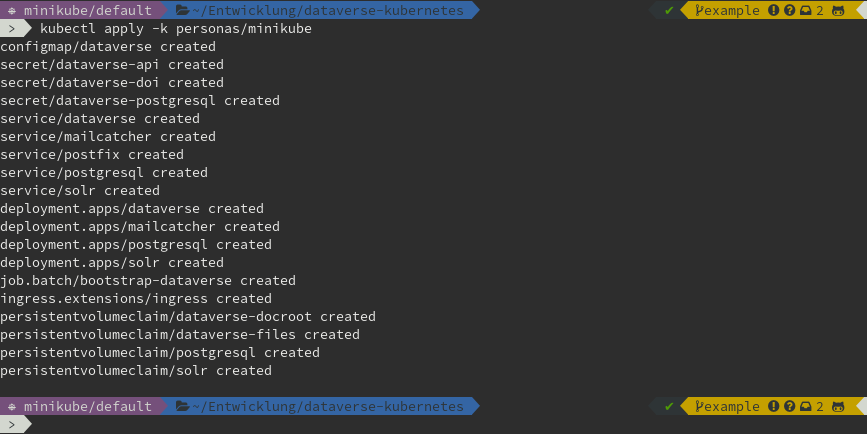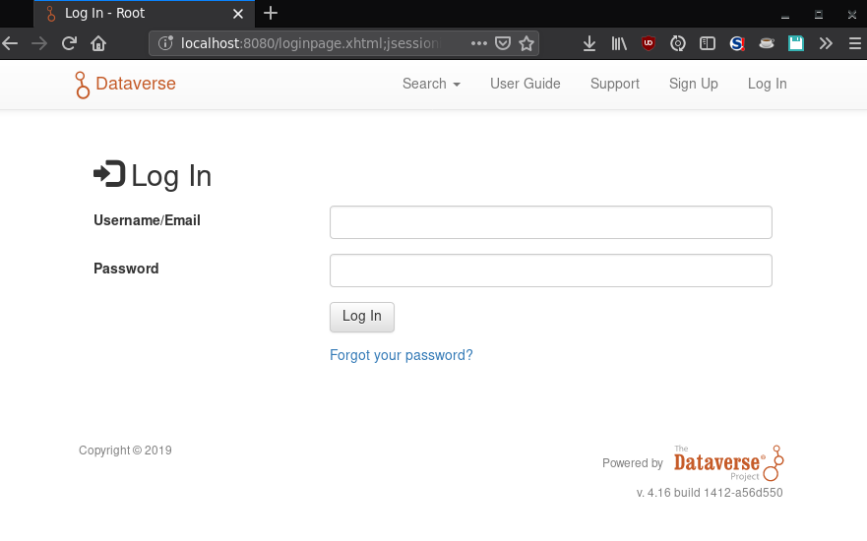Using minikube persona¶
This persona will setup a demo installation with an almost vanilla approach (not many tweaks necessary).
Start with setup of minikube VM¶
Please ensure you have a working Minikube installation or follow the upstream instructions to get you started.
Booting your minikube K8s cluster:
minikube start --memory 6144 --cpus 4 --disk-size 30g

Important
Please provide at least 6 GB of RAM for the Minikube VM, as Dataverse will use a lot of RAM (see Resources and Usage). Remember: this is a VM, so you should have at least 8 GB available in your hardware.
Note
There have been mentions of a OOM-killed API Server on Windows using VirtualBox.
When this happens, please delete and start over with 8 GB memory: --memory=8192
Deploy Dataverse Demo¶
Now let’s create some resources with a habit of “fire’n’forget” (at least till its ready) to create a demo:
minikube kubectl -- apply -k github.com/IQSS/dataverse-kubernetes/personas/demo-minikube

You can check the status of the containers and the bootstrapping job from the output of kubectl get pods,jobs and kubectl logs. It’s gonna take a while…

Done! To access your new deployment, see below for two different options.
Make Dataverse reachable via browser¶
While you wait for the deployment to happen, you can think about your two options
to make Dataverse reachable from your browser: 1) use Ingress or 2) use
kubectl port-forward. See below.
Using Ingress access¶
Add the Ingress IP address to your /etc/hosts:
minikube addons enable ingress
# wait for about 1 minute...
minikube kubectl -- get ingress
Take a note of the IP address (it might take a while till it appears, try again)
and add it to /etc/hosts, replacing XXX.XXX.XXX.XXX with it:
XXX.XXX.XXX.XXX dataverse.demo

As soon as the deployment finished, you can reach your freshly baked Dataverse demo via your browser at http://dataverse.demo.

Hint
Default login for this demo is dataverseAdmin:admin1. See Credentials and Secrets.
Using kubectl port-forward¶
When you cannot change your /etc/hosts file, if Minikube is running remote
or for other reasons, you can always use the kubectl builtin reverse proxy:
kubectl port-forward service/dataverse 8080:8080

Important
You will need to keep this running as long as you want to access the app. This command has the advantage to work in all cases, remotely or not, as long as you have access to the K8s API server.
Please ensure having kubectl v1.14 or later installed or follow the kubectl installation docs.
Now access your freshly baked Dataverse demo via your browser at http://localhost:8080.

Hint
Default login for this demo is dataverseAdmin:admin1. See Credentials and Secrets.
A word on deployment times¶
On a 2016 laptop with
16 GB RAM,
SATA SSD,
Intel Core i5-6300U and
a fairly fast internet connection for image pulling
it takes about 6 to 8 minutes from zero to hero, not including installation time for minikube, VirtualBox or kubectl. See also timestamps above.
